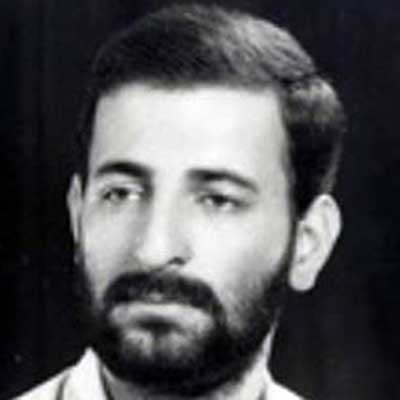Ahmadpour, Muhammad Ebrahim
Masoumeh Abedini
321 بازدید
Muhammad Ebrahim Ahmadpour (1954–1982) served as the mayor and governor of Mahshahr during the Iran-Iraq War.
Muhammad Ebrahim Ahmadpour was born on November 30, 1954, in Qom. When he was two years old, his family moved to Tehran. He completed his elementary education at Safa school and attended Naraqi and Peyman High Schools in Shemiran, ultimately earning his diploma in mathematics. Ahmadpour also additional classes, studying English and Arabic at the Shokouh Institute (Tehran) and Jafari Mosque (Qeytariyeh) respectively. His enthusiasm for religious gatherings and participation in Islamic rituals marked him as an outstanding and successful student throughout his academic journey.
In 1974, Ahmadpour gained admission to Tarbiat Moallem University’s physics graduate program in Tehran. However, during his sophomore year, he was arrested by SAVAK for his political activities. Despite the lack of evidence against him, he spent nearly three months in prison before ultimately being released. Initially, the university was hesitant in allowing him to resume his studies but eventually, his academic talent and the intercession of some of his professors, convinced the university to readmit him. He continued studying until the onset of the Cultural Revolution in 1980.
In 1976, Ahmadpour married his maternal cousin, but their five-year marriage remained childless.
During the Islamic Revolution, when people took control of Evin Prison, Ahmadpour, along with his friends, vigilantly monitored the distribution of weapons to ensure that they did not fall into the wrong hands.
After the victory of the Islamic Revolution, Ahmadpour secured a position in the Prime Minister’s Office. As the insurgencies by anti-revolutionary intensified, he joined Chamran’s group in Kurdistan. His effectiveness caught the attention of the Komala Organization, making him a target.
In 1979, when Imam Khomeini (ra) ordered the establishment of the Jihad of Construction (Jahad-e Sazandegi), Muhammad Ebrahim returned to Tehran. He was appointed head of the Jihad of Construction in Sehmirant. Whenever supplies needed to be sent to the front, he carried the goods on his shoulders to load the trucks.
As the Iran-Iraq War began, Ahmadpour served in the Tehran Jihad of Construction. He later made his way to Khuzestan, where, on Jan 1, 1981, the then governor general, Syeed Muhammad Gharazi, appointed him as the head of the Mahshahr municipality.
Ahmadpour’s responsibilities were diverse, both behind the front lines and on the battlefield. In Abadan, he worked on constructing a new airport runway to provide air support for Operation Samen al-Aemmah. Meanwhile, in Mahshar, he ensured food and housing for twenty thousand refugees. His other projects included digging the Mahshahr canal, rebuilding old rundown neighborhoods, establishing cooperative stores, constructing passenger terminals, and even building two ice factories and a guesthouse.
Ahmadpour, left his position as a successful manager in Mahshahr to join the fighters on the frontlines during Operation Samen al-Aemmah. He was tasked with being a mortar operator on the front lines.
On January 10, 1982, life took a tragic as Muhammad Ebrahim was involved in a car accident while traveling along the Abadan-Mahshahr Road. Despite his injuries, he returned to Mahshahr before making a fully recovering, determined to fulfill his duties. Unfortunately, this decision took a toll on his health, exacerbating his heart and lung conditions. He was eventually transferred to Labbafinejad Hospital in Tehran, and later to Germany for treatment. However, on April 10, 1982, Muhammad Ebrahim Ahmadpour attained martyrdom. His body was transported back to Iran and laid to rest in the Behesht Zahra Cemetery in Tehran.[1]
In his will, Muhammad Ebrahim Ahmadpour expressed: "Martyrdom is not our goal; rather, it is a means of expressing our belief in the Oneness of God and our steadfastness in the face of adversity...".
[1] A summary of an article published in the Sacred Defense Encyclopedia, Vol. 1, Tehran, The Center of Encyclopedia of the Sacred Defense Research Institute, 2011, Pp. 358-360.



